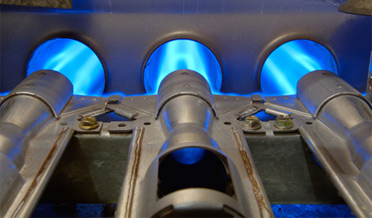Furnace Maintenance Tips to Avoid Heater Problems
HVAC professionals always recommend furnace and air conditioner maintenance programs and, since we say it so often, it might sound like background noise to your life. Each day, a massive amount of information clamors for the attention of American homeowners. However, technicians perform a variety of furnace maintenance tasks that are vital to keeping your furnace running strong all year long and for years to come. Furnace Maintenance tasks may include:
Changing the Air Filter
This simple chore is essential since the furnace requires the movement of air: the entire volume of air should move through your furnace about every 2 minutes of a heating cycle. A clogged filter can leave you feeling a little chilly on cold days. It also creates stress on your entire heating system.
Check the Ductwork
Only a portion of the network of ducts will be visible after construction is completed. However, observation of the visible portion can tell us:
- How clean or dirty the ducts are. This is mostly an air quality issue.
- Potential leaks in the portion that is visible. Repairing any leak that can be observed will improve efficiency and comfort.
Clean the Blower Fan
The amount of dust that collects on moving parts is crazy—how often does the ceiling fan need to be cleaned? The blower motor is a cylindrical fan that is responsible for moving air during heating and cooling cycles. Dust reduces the efficiency of the fan and reduces the amount of air movement.
Check Electronics Thoroughly
- A series of sensors measure your indoor environment and send messages to the furnace system. The most noticeable sensor is in the thermostat; it measures air temperature and sends a signal calling for a heating cycle as needed. The thermostat needs to be tested and calibrated as needed. Other sensors are located throughout the system, sensing flame or the presence of smoke or carbon monoxide. These essential sensors need to be cleaned and tested regularly.
- Beyond the sensors, a complex network of electrical switches and controllers manage the energy needed to keep occupants warm and comfortable. When one of these components weakens, it creates a cascade of stress on other system components. Simple voltage tests can detect stress or weakness, ensuring a small problem does not develop into a large problem.
- Another set of safety controllers prevents damage or injury should a problem create an overload or short-circuit.
Gas System Furnace Maintenance
- It is extremely important to regularly inspect your gas supply line and connections to prevent damage, injury, and death.
- The gas pressure needs to be checked at the manifold to ensure adequate flow to the burner.
- The most delicate part of a gas-powered system is the ignition/pilot light assembly. A pilot light should burn blue, with a hint of yellow at the base. This indicates complete combustion.
- A flame sensor can accumulate soot and dust, interfering with burner ignition.
- Rust and soot can develop on the pilot light and burner assembly and need to be cleaned away for good performance.
- The heat exchanger and flue pipe need to be cleaned and inspected for damage regularly. Rust can weaken the walls of these structures, allowing carbon monoxide and carbon dioxide to leak into the home.
General Observations
Furnace Maintenance inspections will also test furnace function by measuring temperature changes during a heating cycle; these measurements will be taken from various spaces to ensure proper the system is heating efficiently.
Leave Furnace Maintenance and Repair to the Experts!
Schedule your furnace maintenance consultation by calling All Cool AC & Heating at 281-238-9292 or contact us via email and let our NATE-certified furnace maintenance and heater repair technicians put their experience to work for you.





